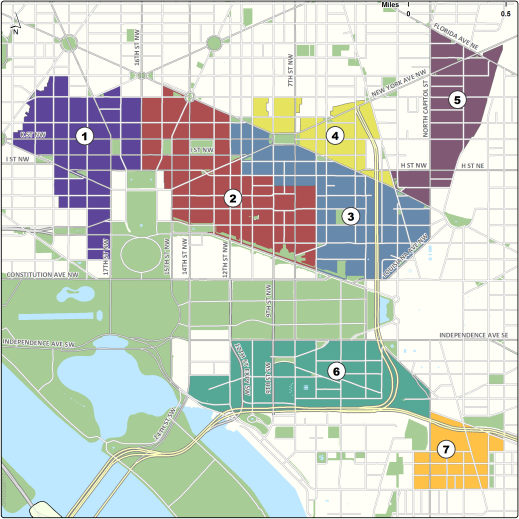 |
D.C. Municipal Regulations (Last Updated: September 13, 2017) |
 |
Title 11. ZONING REGULATIONS OF 2016 |
 |
SubTilte 11-I. DOWNTOWN (D) ZONES |
 |
Chapter 11-I9. USE OF CREDITS |
Section 11-I900. GENERAL REQUIREMENTS AND RESTRICTIONS
- 900.1 Subject to the limitations of this chapter, credits generated by the actions described in Subtitle I, Chapter 8 may be used to:
(a) Reduce the amount of gross floor area of the residential use required in a building located in the D-4-R, D-5-R, or the D-6-R, or reduce the amount of gross floor area of Arts use in a building located in the Downtown Arts Sub-area regulated by Subtitle I § 607;
(b) Construct non-residential gross floor area in excess of the maximum permitted non-residential density in the D-3 through D-8 zones either on site or within an allowed trade area, equivalent to the number of the credits transferred as evidence by one (1) or more credit certificate filed with the building permit application, up to the maximum permitted FAR of the zone; or
(c) Allow for the termination of a covenant recorded pursuant to Subtitle I, Chapter 8 for the acknowledgment of credits in order to permit redevelopment of a site that reduces or eliminates the uses that originally generated the credits.
900.2 Trade areas in the downtown zones are identified in Figure I § 900.2:
FIGURE I § 900.2: CREDIT TRADE AREAS

900.3Credits generated and acknowledged pursuant to Subtitle I, Chapter 8 may be used for the purposes and within the trade areas identified in the following table.
TABLE I § 900.3: CREDIT-GENERATION, PURPOSES, AND AREAS OF USE
Action Generating Credit
Section in Subtitle I, Chapter 8 Governing the Generation of the Credit
Purpose for which Credit May be Used
Area(s) in which Credit may be used (see Figure I § 900.2)
Development of residential gross floor area where it is not required or that exceeds a minimum residential requirement of Subtitle I, Chapter 5.
§ 802
Construct non-residential gross floor area in excess of the base permitted non-residential density of the D-3 through D-8 zones
Same trade area in which the credits were generated.
Reduce the residential requirements of the D-4-R, D-5-R, or D-6-R zones.
Same trade area in which the credits were generated.
Development of arts or arts-related space that exceeds the minimum area requirements of Subtitle I § 607 for such uses in the Downtown Arts Sub-Area.
§ 803
Reduce the Arts sub-area requirements of Subtitle I § 607
Downtown Arts Sub-Area (Subtitle I § 607) of trade area 2
Construct up to 0.5 FAR non-residential gross floor area in excess of the base permitted non-residential density of the D-3 through D-8 zones
Historic Preservation rehabilitation
§ 807
Construct non-residential gross floor area in excess of the base permitted non-residential density of the D-3 through D-8 zones up to the limits of Subtitle I, §§ 200.2 and 200.3. Credits cannot reduce residential requirements of the D-4-R, D-5-R, or D-6-R zones
In any trade area
Conversion of transferrable development rights (TDRs)
§ 806
Construct non-residential gross floor area in excess of the base permitted non-residential density of the D-3 through D-8 zones. Credits cannot reduce residential requirements of the D-4-R, D-5-R, or D-6-R zones
In any trade area
Conversion of unallocated combined lot development (CLD) gross floor area
§ 806
Construct non-residential gross floor area in excess of the base permitted non-residential density of the D-3 through D-8 zones
Same trade area within which the project that generated the unallocated CLD is located.
Reduce the residential requirements of the D-4-R, D-5-R, or D-6-R zones
Development of child development center, child development home or certified business enterprise in the Downtown Retail Core, Downtown Arts or Chinatown sub-areas of Subtitle I, Chapter 6.
§ 804
Construct up to 0.5 FAR non-residential gross floor area in excess of the base permitted non-residential density of the D-3 through D-8 zones
Same trade area in which the credits were generated